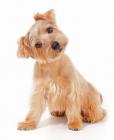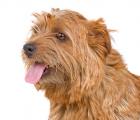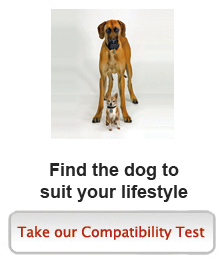Norfolk Terrier
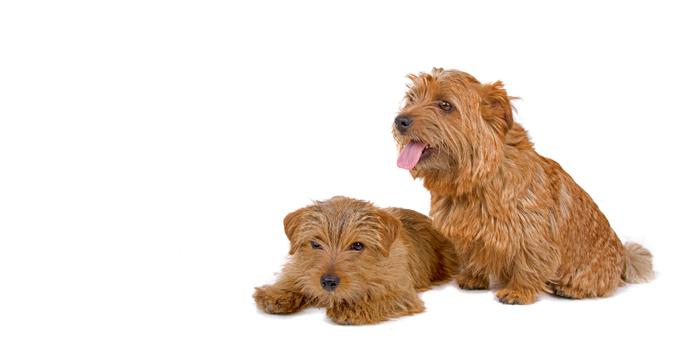
In my own words
You’d be crazy not to notice my playful yet elegant aura that radiates from within. My small round head starts off this adorable self, from my head is my rectangular muzzle that ends with a tiny black nose. Filled with emotion are my two large round eyes that can melt anyone around them. Very short legs lead to my round feet. I’m a sweet and intelligent dog that’s great with other dogs, but jealousy can get the better of me. I love to please you and love to be your companion, I also have two major hobbies that may annoy you at times. One being the sound of my own bark the other is I absolutely love to dig. But given the right training I can be tempted with other stimulants, as my calm and stable nature allows me to be trained. Nicknamed the ‘Demon’ because of my feisty nature I am actually the sweetest, even tempered of the terrier breed.
My ideal owner(s)
City Homes
Older generation
Families
New and Experienced owners
What they say about me
Bold
Alert
Sturdy
Sociable
Adaptable
Even Tempered
Affectionate
Spirited
Lovable
Is this Norfolk Terrier for you?
Test your knowledge about the Norfolk Terrier
Information essential about the Norfolk Terrier
Breed Group - Terrier
SIZE
Popularity:
These terriers became the dog breed of choice at Cambridge, so for a while they were known as CamTabs. A CamTab named "the Jones terrier" is considered the foresire of the breeds. By the 1930s, quarrels by dog breeders as to what the ideal terrier would look like split the breed into the Norwich and Norfolk terriers. The Norfolk terrier shares an identical early history with the Norwich terrier. During the development of these breeds, both prick and drop ears were seen, and neither could lay claim to being more authentic or original than the other. In the 1930s, soon after their entry into the show rings, breeders found that crossing the two types of ear carriage resulted in uncertain ear carriage in the offspring, so they began avoiding crossing the two ear types. The prick-eared type was more numerous; in fact, the drop-eared type almost vanished during World War II.
Breed History:
In the ‘drains’ of their native land, East Anglia, they have excelled in keeping the rat population down. It is interesting that in the early days, great pride was taken in their being ‘game’. There is even a certificate from a Master of Foxhounds the East Essex Hunt, in 1932, that Tobit was ‘entered to badger and is game’. In today’s climate of antipathy towards hunting, plus the horror of badger baiting, this seems somewhat grotesque, as a badger can kill a small terrier with one bite. It is also of course illegal. The present day Norfolk, still an ardent ratter, retains all his hunting instincts, but the emphasis has changed from the ideal of being ‘game’ to being a sweet natured companion - but still a terrier. Of course no prints of the Norfolk by name exist from the last centuries but these scenes give a good idea of our breed’s ancestors and their activities.
The Norwich Terrier and later the drop-eared variety now known as the Norfolk Terrier, were believed to have been developed by crossing local terrier-like dogs, small, short-legged Irish Terrie breeds and the small red terriers used by the Gypsy ratters of Norfolk. The present day Norfolk Terrier began life as a show breed in 1932 when, as the drop-eared Norwich Terrier, it was accepted on the Kennel Club breed register It is only from 1964 that the UK Kennel Club decided to make a distinction between the dogs with floppy ears, (since referred to as the Norfolk Terrier breed) and the dogs with erected ears (since referred to as the Norwich Terrier breed).
Character:
Norfolk’s are self confident, spirited, and happy and carry themselves with presence and importance, holding their tails and heads erect.
The charming and uncomplicated character of Norfolk Terriers not only lures the novice dog owner, but people who have had wonderful experiences with other breeds. Always alert, lighthearted and ready to play, they are, at the same time, comfortable to live with, easy to raise, and not confrontational with other dogs-a difference from many other terrier breeds. Norfolk Terriers are vigilant, but with no unnecessary yelping.
They are however fearless and their courage is incredible for such a small dog. They are intelligent, lively and friendly little dogs that can be a bit willful at times. They will get on well with older children and many elderly people seem to favour this breed. They should be socialised from an early age, particularly with cats, as they will chase them given half a chance. They are known to bark and dig a lot and therefore need adequate training and exercise. Feisty, bold, inquisitive, game, scrappy, stubborn and independent, the Norfolk is all terriers. It has been called a "demon" in the field, and it loves to hunt, dig and investigate.
Temperament:
Norfolk’s are terriers, they dig, and they catch mice and rats and have been known to dispatch a bird or two - although their temperament is generally true to the standard, which is for a ‘lovable disposition, not quarrelsome’. Norfolk’s are described as fearless, but should not be aggressive despite being capable of defending themselves if need be. They, along with the Norwich Terriers have the softest temperament of the Terrier Group. Norfolk’s work in packs and must get along with other dogs. As companions, they love people and children and do make ideal family pets. Their activity level is generally reflective of their environment. This breed should not be kept or live outside as they thrive on human contact. Norfolk’s can be barkers and are vocal. Introduced properly they live well with other household pets but outdoors they are natural hunters with a strong prey drive for small vermin.
Conformation:
Norfolk Terriers are the smallest of the working terriers. They are active and compact, free moving, with good substance and bone. The ideal height for a Norfolk terrier is 10 – 12 inches at the withers and weight is roughly 5 – 7 kgs. They have a double coat, soft undercoat with a harsh top coat, which should be hand stripped to keep the colour and texture. Norfolk Terriers are good and faithful companions. They are very attached to their owners and enjoy playing with children. Adult Norfolk Terriers can be wary of strangers therefore, it is highly recommended to socialize the puppy from an early age. A lack of socialization of the Norfolk terrier puppy can be the source of behavioral issues such as extreme shyness or aggressiveness. Due to the standard terrier traits they will act upon them, feisty, hard headed, energetic, quick to chase and tenacious. With a muzzle similar to a fox’s, this breed possesses large, sturdy teeth. It has dark vivid eyes, striking eyebrows and whiskers, ears that droop down closely toward the cheeks, a tail that is usually cropped to half its true size.
Colour:
Shades of red, wheaten, tan, grizzle or black, some may have limited white.
Training:
Remember that Norfolk’s are terriers, originally bred as ratters and not as lap dogs, and puppies will need training from a young age. It pays to be a knowledgeable owner and to bring up the Norfolk puppy with firmness, love and understanding. The Norfolk terrier will learn quickly what is expected of it, but the training must be consistent as this terrier has a will of its own. As puppies they could try the patience of a saint at times, as they are so lively and playful. Norfolk Terriers require a gentle but firm training. As most Terriers, they can be stubborn and, therefore, will require consistent training methods. When disciplining a Norfolk terrier, owners should be careful in giving the appropriate level of correction to their dog. Terriers who feel they have not been treated fairly are more likely than other breeds to snap back at their owners. The Norfolk terrier puppy will also need to be introduced to other dogs in order to avoid aggressive behaviours towards them in the future. Being very active little dogs, they will need a fair amount of exercise
Care:
This breed can be a good apartment dog as long as it gets enough exercise. Access to a yard is unnecessary, as it likes to keep busy when indoors. It enjoys spending time with its family, and must live indoors.
If you have a garden it is essential that it be securely fenced for although not all Norfolk’s are escapologists, some love hunting or are just inquisitive, with possible dire consequences. Special care should be taken with the dog living in town to prevent accidents. Regular grooming and hand stripping, not clipping, of the coat is needed to maintain a weatherproof coat. A routine of nail cutting and teeth cleaning will help to keep a Norfolk in good health. Norfolk’s as a breed are reasonably long lived - 16 years is not unusual.
Health:
Norfolk Terriers have a life expectancy of about 14 years. The breed is subject to some diseases such as hip dysplasia, patellar luxation and heart murmurs. Norfolk’s can also been prone to cramps, some breathing problems and epilepsy.
You may also like:
If you like Norfolk Terriers, you may be interested in breeds of the same size »
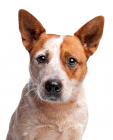
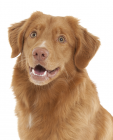
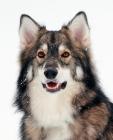

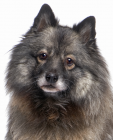
If you like Norfolk Terriers, you may like other breeds with similar characteristics »
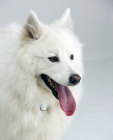
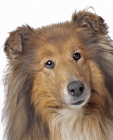
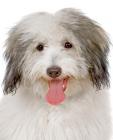
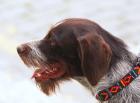
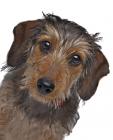
If you like Norfolk Terriers, you may be interested in these other terrier dogs »
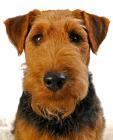
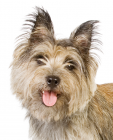
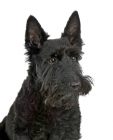
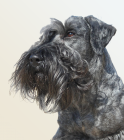
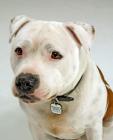
Advice on choosing your breed »
Find an animal shelter or rescue home where a Norfolk Terrier is waiting for a new home »
Of course if a small breed of dog is your first point of call, then a Norfolk may be the one for you. But just be aware that small by build a definite giant in character, you must be in love and prepared for the terrier nature that comes with. Be prepared for a strong willed, a very proud and confident dog. Also make a note of his energetic and playful nature. He may be small but he doesn’t lack in bravery and courage, and their sharp eyesight and ears make them excellent watchdogs. But given all the right ingredients they are great companions and have a real tendency to want to please their owners. Although hardly ever used for its original intention, the breed has never lost its perky and fearless outlook, whilst having a very up front attitude, they are considered to have the softest temperaments. Hardly ever the type to be aggressive. Barking and digging are natural for them, although not commonly to a destructive end. The uneventful life goes against the very nature of this working class breed. They will do best living indoors but will require plenty of activity. In fact, they are likely to take in all the activity a 10 to 12 pound dog can handle. This may not amount to much for the average human being; however activities should center on being interactive as one of the worst challenges for this breed is to be ignored
Be the first to rate this breed »
|
*PLEASE NOTE: All our breed profiles are general, and all dogs are individuals. Always talk to the breeders and meet the owners you are buying from. Try to meet the dog and its parents if it is a puppy in their home environment.









